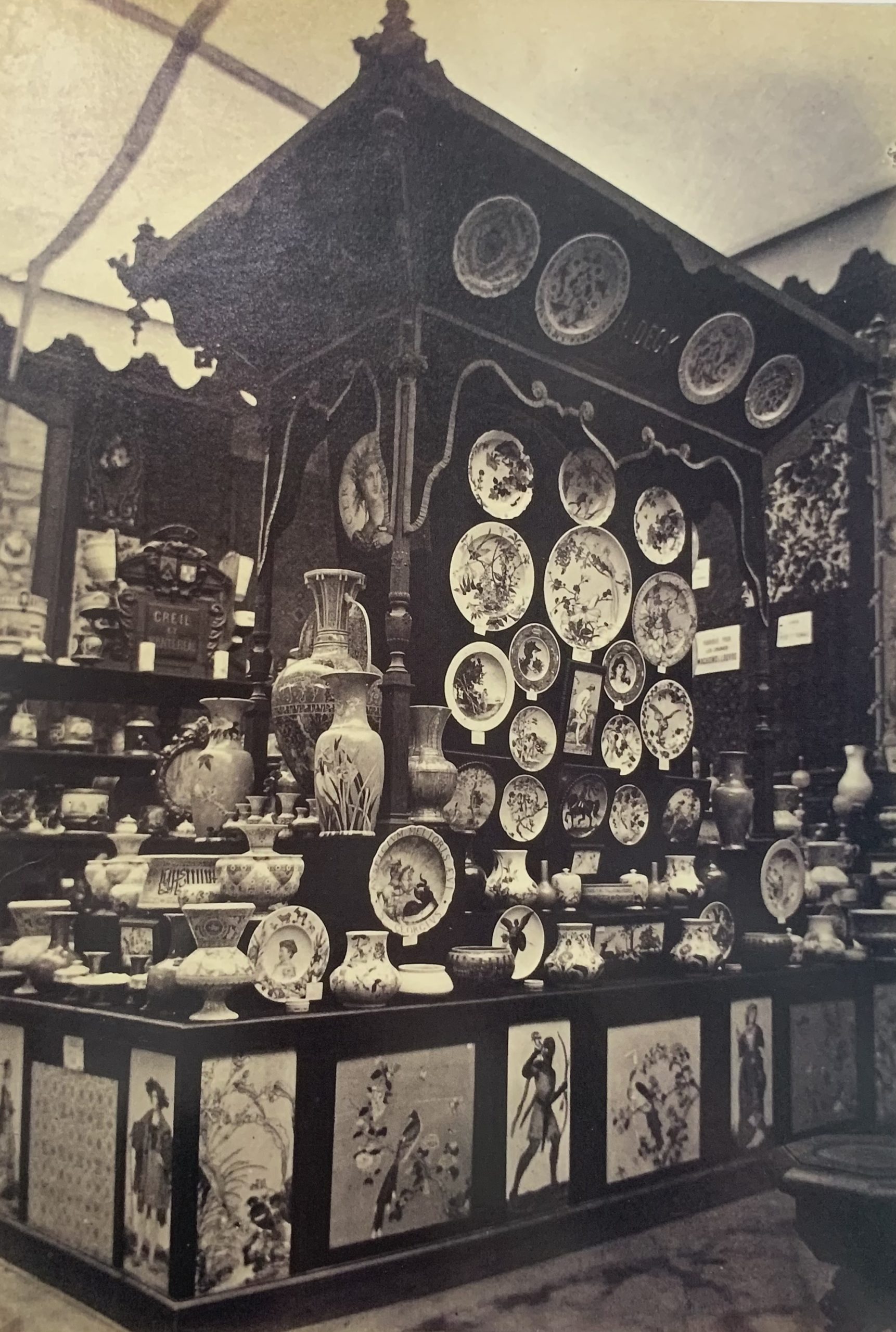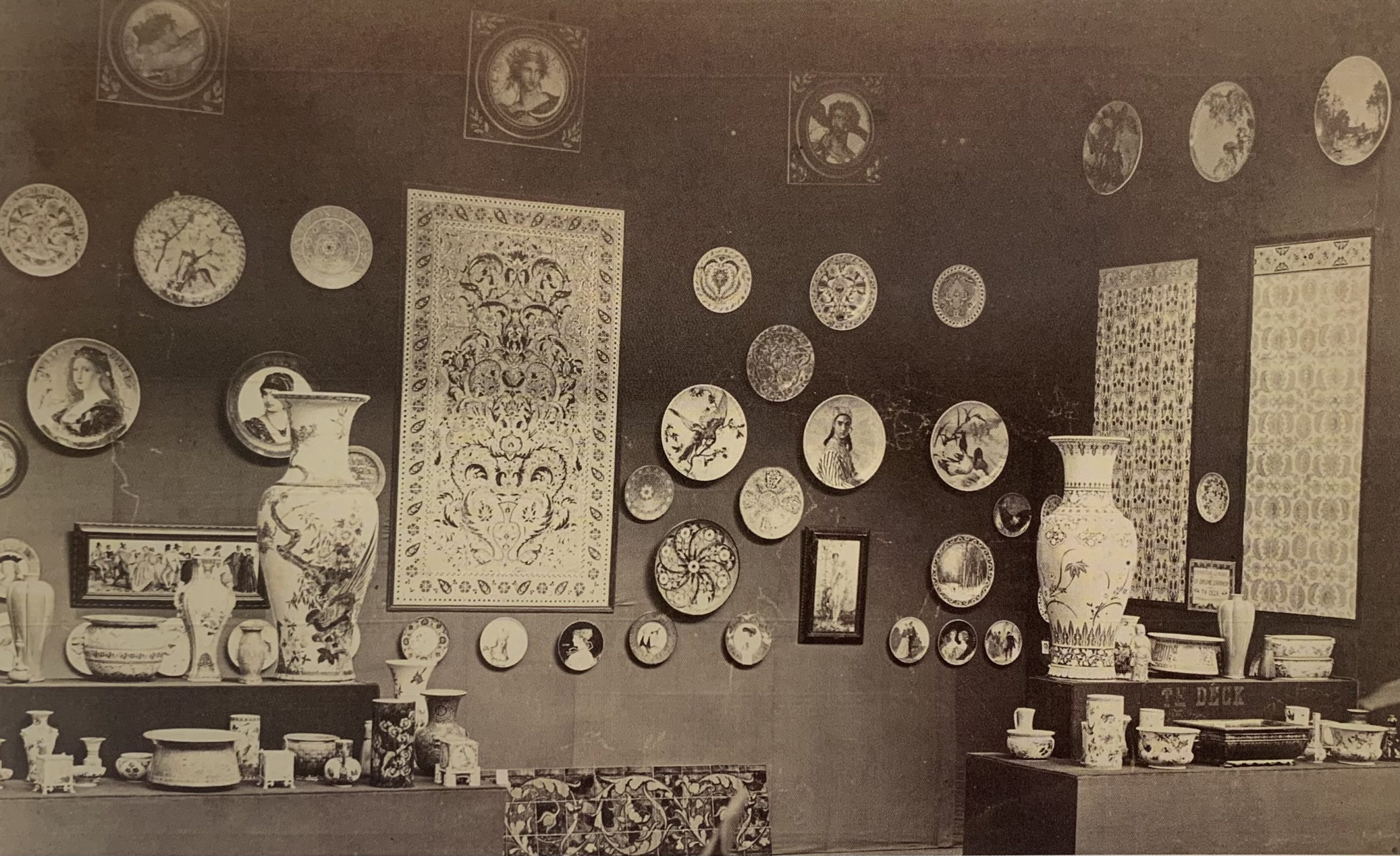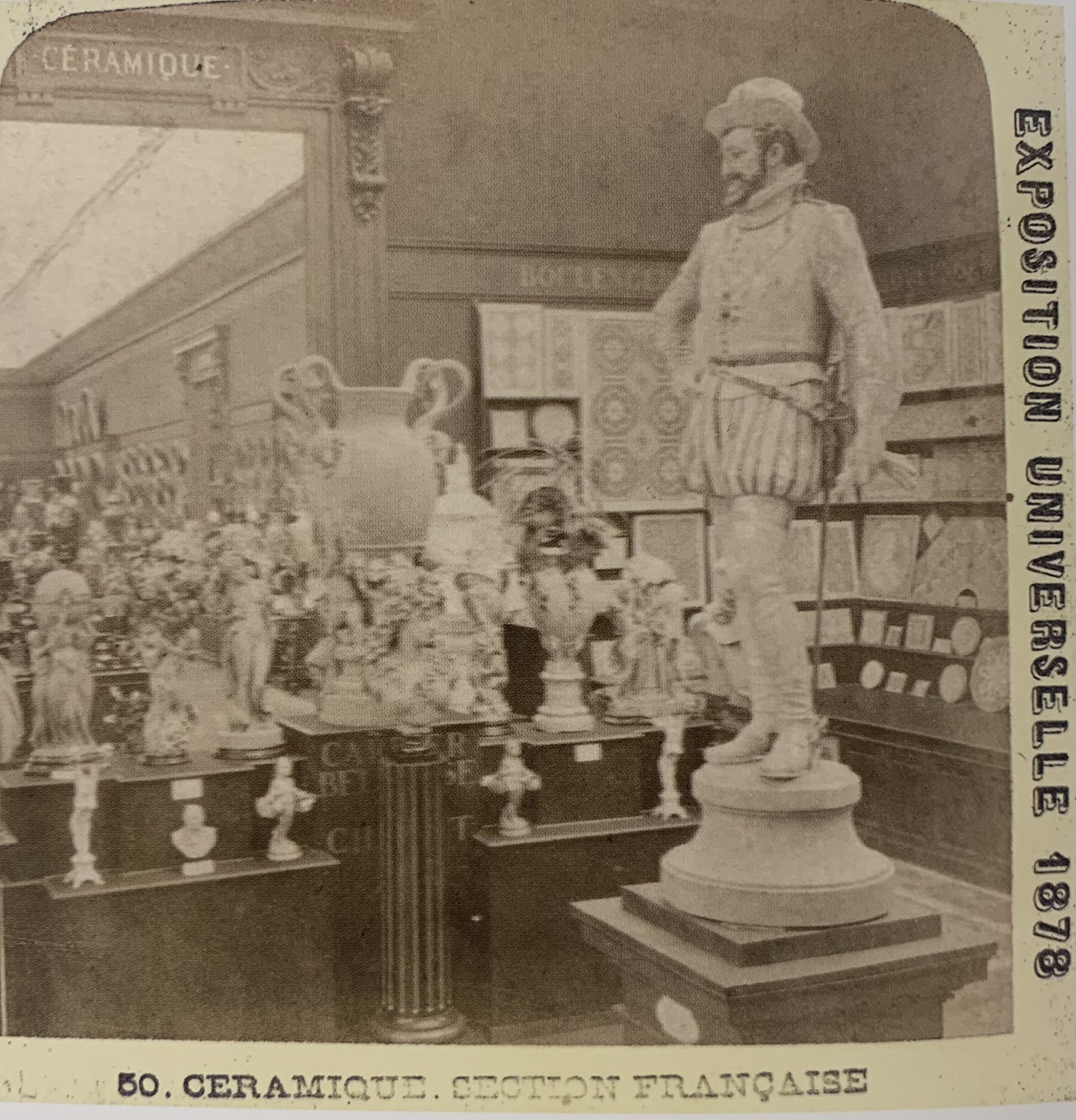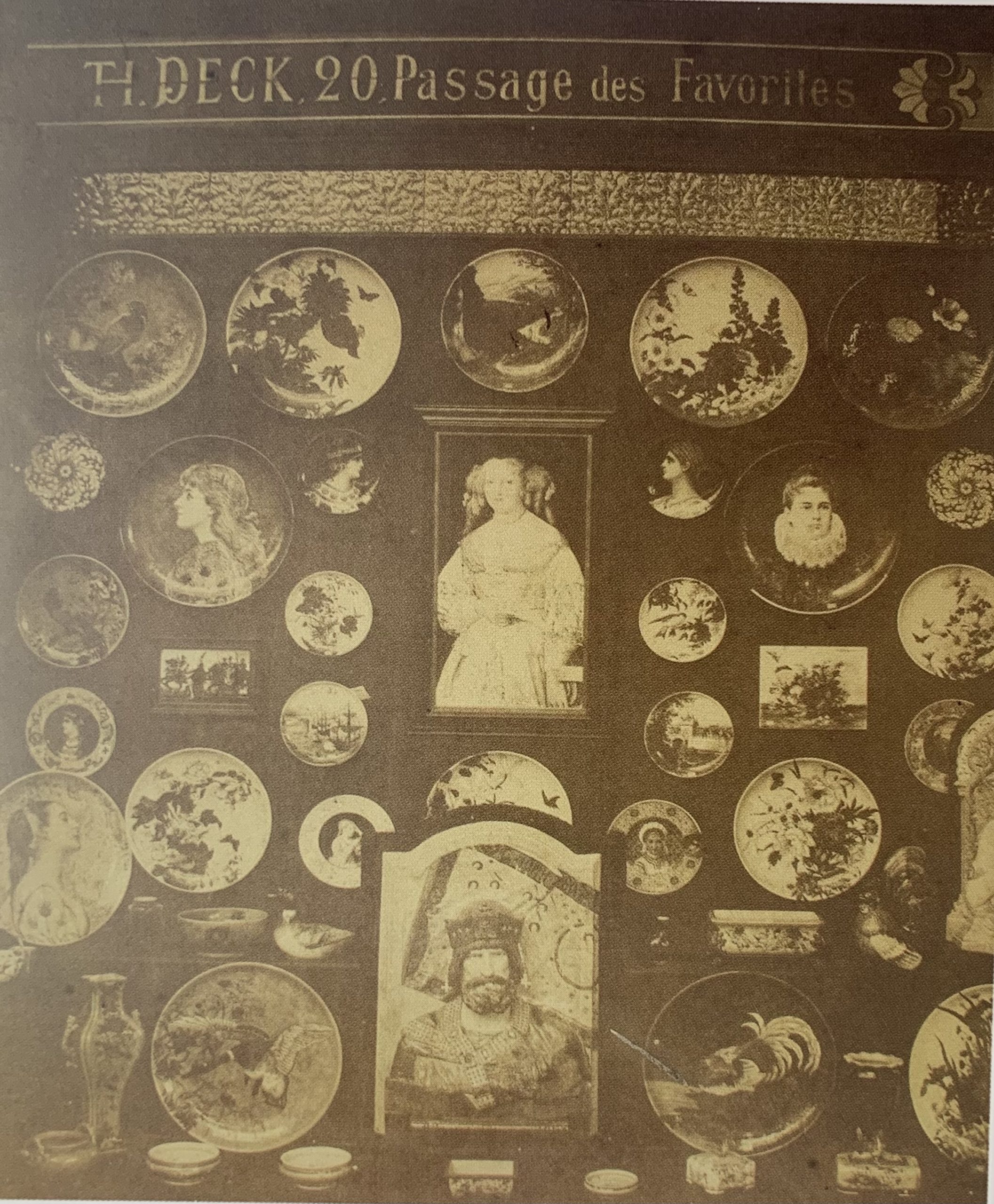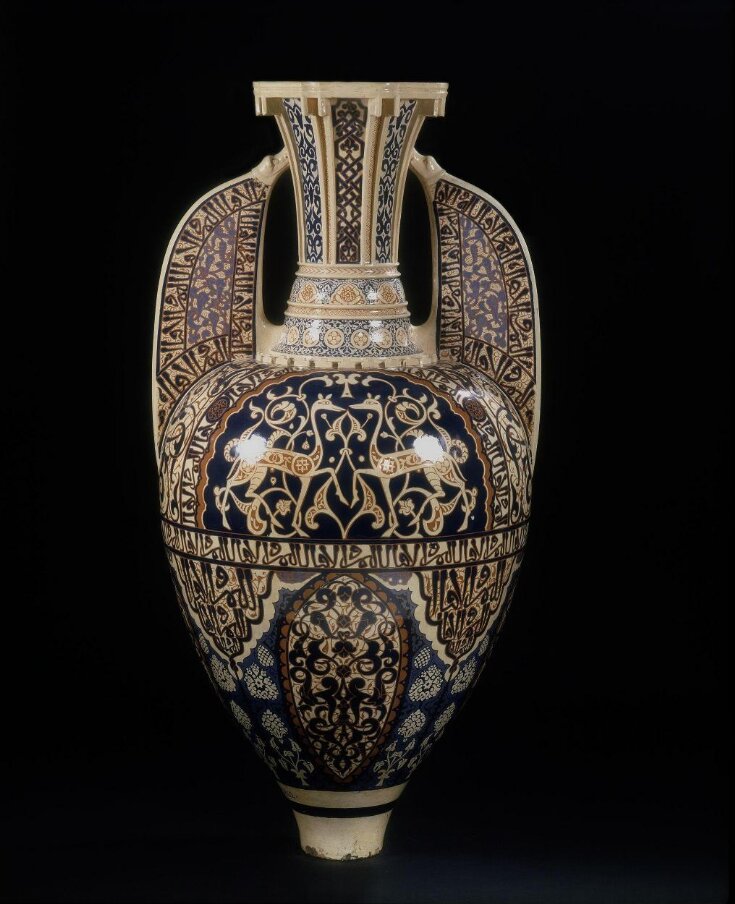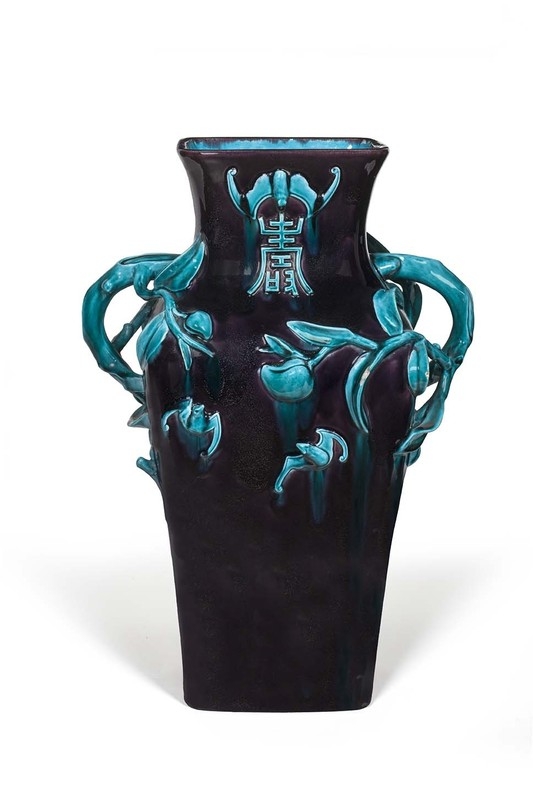The work of Théodore Deck (1823-1891) is typical of an important eclectism. Indeed, the artist mixes in his production many influences that are touching the art in the 19th century, passing by the Historicisme that we find on the portraits of historical or famous people on some plate, Orientalisme, Japonisme or the Chinese Art.
Apprenticeship
Théodore Deck (1823-1891) starts an apprenticeship in 1841 at the wood burners maker Hügelin in Strasbourg, where he discovers the method of colored pasta inlays from the Saint Porchaire method inherited from the 16th century. In parallel, he draws and sculpts the clay in the workshop of the sculptor André Friedrich (1798-1877). As it is the tradition for the wood burners makers in Alsace, he makes a study travel going in many Eastern Europe countries such as Germany, Austria or Hungary. His work is noticed and allows him to obtain orders for Austrian castles like the Schönbrunn palace.
He gets back in France and more precisely in Paris in 1847. Then, he starts working in the wood burners factory of Gaspard Victor Vogt (1808 – 1845) lead by his widow Antoinette Rose Vogt.
Because of the 1848 Revolution, Théodore Deck goes back to his hometown and advised by his family, opens his own terra cotta workshop.
Return in Paris and first medal
In 1851, he decides to return to Paris where he is employed as supervisor by Marguerite Joséphine Vogt, the daughter of his former employer, for whom he draws and makes models.
Four years later, the workshop wins a first medal during the 1855 World’s Fair.
Opening of a workshop with his brother
He decides then to establish himself alone, joined by his eldest brother in 1858. At the beginning, they were located on the 46 boulevard Saint Jacques, and only make wood burners surfaces for a while, then successful, they decide to diversify by doing ceramic.
The Deck esthetic
They move in 1866 in the passage des Favorites, on the 271 rue Vaugirard where the Deck workshop starts collaborating with many artists already known from the Salon, for the decoration of plates for instance. Among them, we can name Albert Anker (1831 – 1910), Ernest Carrière (1858 – 1908) or even Sophie Schaeppi (1852 – 1921). Théodore Deck also has formed apprentices of which the most known is Edmond Lachenal (1855 – 1948).
The oriental art, for instance, was an important inspiration of the ceramicist, convinced that the Far East has fertilized the principles, decorations and technicals capable to renew the French art of ceramic. Fascinated by the earthenwares of Iznik made in Anatolia between the end of the 15th century and the beginning of the 17th century, he’s inspired by the variety of motifs : animals, scales, scrolls, chevrons, roses, tulips, grapes, etc. that we find on his creations.
Not to be content only with the Iznik earthenwares, he’s also inspired by the islamic, Hispano-moorish or Egyptian art, because of the motifs but also the colors of the earthenwares that we don’t find on the French ceramic, such as turquoise blue, reds or even beige shades.
Japan, by being opened for the first time to International trades in the late 1850’s, creates an esthetic impact on the European arts and especially thanks to the discover of porcelain, fabrics, lacquers, stamps, that Theodore Deck used to collect.
The influence of the Asiatic countries and especially Japan and China is visible on Deck’s production from the 1870’s. Nevertheless, it is not always easy to distinguish among Deck’s decors the one that are inspired by China or Japan. Especially because the art objects from the two countries were not dissociated during the 19th century.
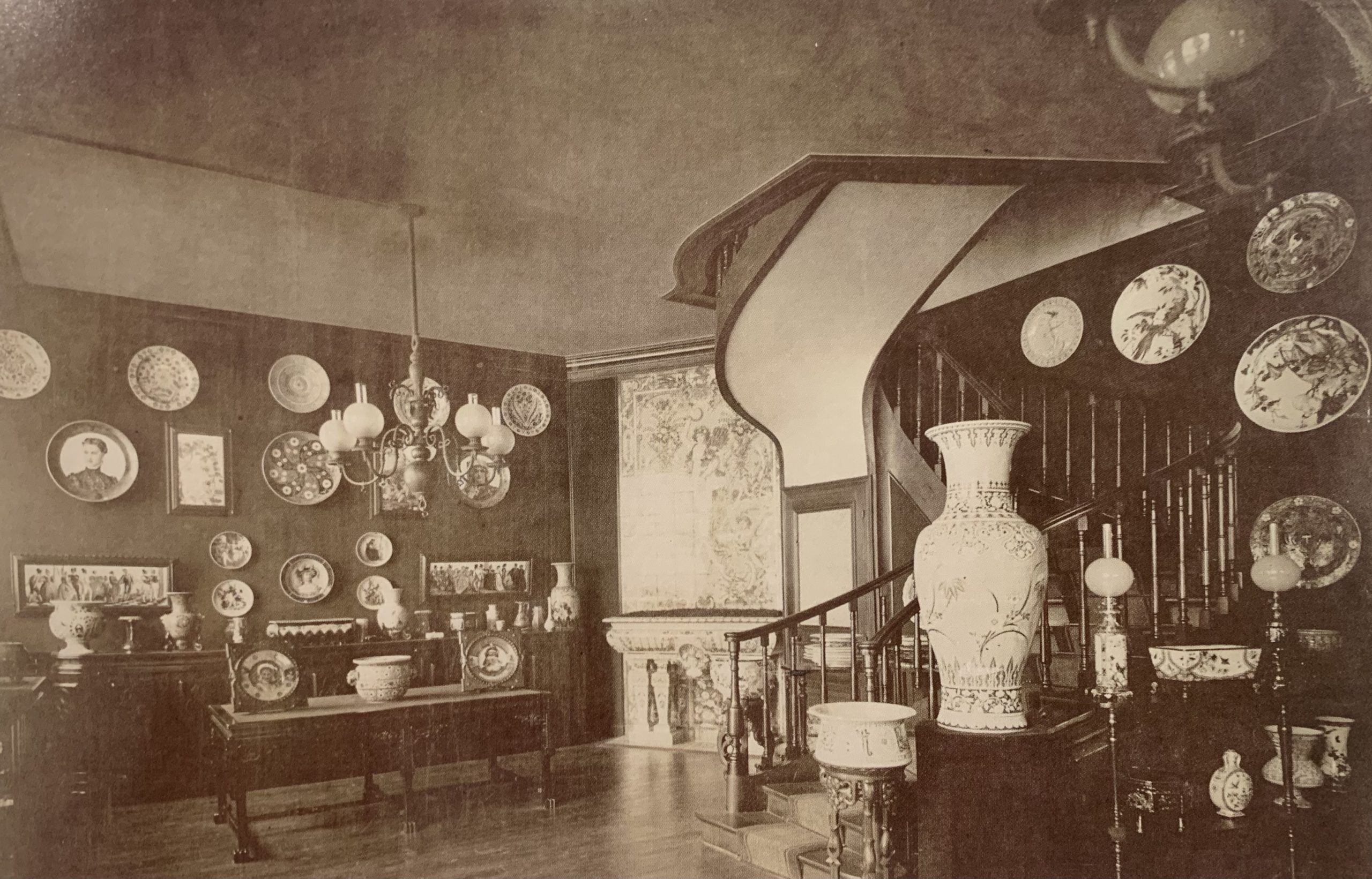
Photograph of Théodore Deck’s shop located at 10 rue Halévy, circa 1875
Musée Théodore Deck et des pays Florival, Guebwiller
The rewards
The Deck brothers exhibit for the first time their creations in 1861, during the Exposition des arts industriels held on the Champs Elysées. Théodore Deck received there a first silver medal despite the reserved critics especially about some cracked pieces. It’s only the following year during the London World’s Fair that he starts becoming very successful by presenting his famous blue on the vase of Alhambra. Several of his exhibited ceramics were bought by the Victoria & Albert Museum. In 1865, he exhibits non cracked and innovative ceramics with his first tries of relief on colored background. Théodore Deck will use this technique during his entire career on his works gathering characters, birds, flowers or even dragons under a blue, green, yellow or purple glaze. The participations to the World’s Fairs rhythm the career of the ceramicist and become the motor of his technical breakthroughs. During the one of 1867 in Paris, he receives a new silver medal thanks to a new innovation which makes appear metallic reflection on some of the ceramics. In 1873 in Vienna, he collaborates with Émile Reiber for the presentation of a spectacular planter, long of 2 meters. He’s also called for the realisation of the North entrance of the Beaux-Arts pavillion during the 1878 World’s Fair, where he presents on the same occasion a statue of Henry IV and his technical of gold background for the plates with portraits. The same year he becomes knight of the Légion d’honneur.
The manufacture de Sèvres
In 1887 and until his death in 1891, Théodore Deck leaves his workshop to start his new job as director of the Manufacture de Sèvres. He leaves the direction of his workshop to his brother Xavier, who is replaced by his son, Richard Deck, when he dies.
Closing of the workshop
Richard Deck couldn’t keep up with the workshop and has to close it in 1905.
Discover our other websites
dedicated to houses and artists of the second half of the 19th century
L'Escalier de Cristal
Tusey Foundries
Fourdinois
Gentil & Bourdet
Victor Geoffroy-Dechaume
Henri Husson
Alfred Janniot
Jules Loebnitz
Paul Sédille
Perret & Vibert
J-Nicolas Rivart
Gabriel Viardot
Find us
120 rue des Rosiers 93400

+33 (0)6 60 62 61 90

contact@marcmaison.com

Copyright © Marc Maison | 2021
Politique de confidentialité
